Summary
-
Knowledge, techniques, and practical tips that every field technician and installer needs to know in order to perform a high-quality, reliable VSAT installation job.
Description
As the follow-on course to GVF510 (Core Skills) and GVF520 (Satcom Fundamentals theory), GVF521 covers the range of knowledge, techniques, and practical tips that every field technician and installer needs to know in order to perform a high-quality, reliable VSAT installation job. Covers the range of practical tips, techniques, and knowledge taiolored for fixed-VSAT field technicians and installers, such as using a compass, calculating levels in dB, voltage drops, cable lengths, using a spectrum analyzer, grounding, basic IP networking, safety issues, and troubleshooting. This course has been updated to Ed. 1.4 for the LP5 delivery system.
Prerequisites:
Courses GVF510 and GVF520 .
Audience:
The course is appropriate for all installers and field technicians who may be responsible for activating any type of VSAT terminal.
Delivery:
Animated & interactive HTML5, self-paced, on-line format. Requirements: internet access while studying the course material (high speed preferred ); current browser with JavaScript enabled; permission to access SatProf server and learning system websites; mouse.
Tests:
Each lesson contains a mandatory quiz and simulator-based skills assessments. All pages must be viewed and all quizzes and simulator tests must be passed in order to satisfactorily complete the course.Lessons
- Course introduction, including review of Certification requirements.
- Site survey and planning, including compass skills with interactive exercises, clearance calculations, antenna mounts, and safety issues.
- IFL planning, including dB theory, cable loss calculations, DC loop resistance, voltage drop, return loss, and VSWR.
- Tools and test equipment, including a real-time interactive spectrum analyzer simulator and tutorial on measurement of C/N.
- Outdoor equipment assembly, including waveguide flange identification and mating, OMT port identification, and impact of antenna assembly errors.
- IFL installation, covering building entry points, cable dressing, and review of crimp and compression c onnector attachment.
- Grounding, including lightning discharge concepts, power grounding, and grounding techniques.
- Antenna Pointing Review, shows how to use the antenna simulator, pointing the antenna, find a satellite, and provides interactive 3-D simulator exercises.
- Carrier lineup and link test, reviewing mandatory and optional tests required before activating a VSAT for transmit.
- Data networking, including Ethernet, IP addressing, routing, DHCP, DNS, NAT and the ping and tracert tools.
- Safety, covering potential hazards to the technician and the public, proper equipment, and technique.
- Troubleshooting and maintenance, including common and unusual problems, fade margin and sidelobe checks, interference, and preventive maintenance.
- Finishing the job, covering review, pictures, and cleanup.
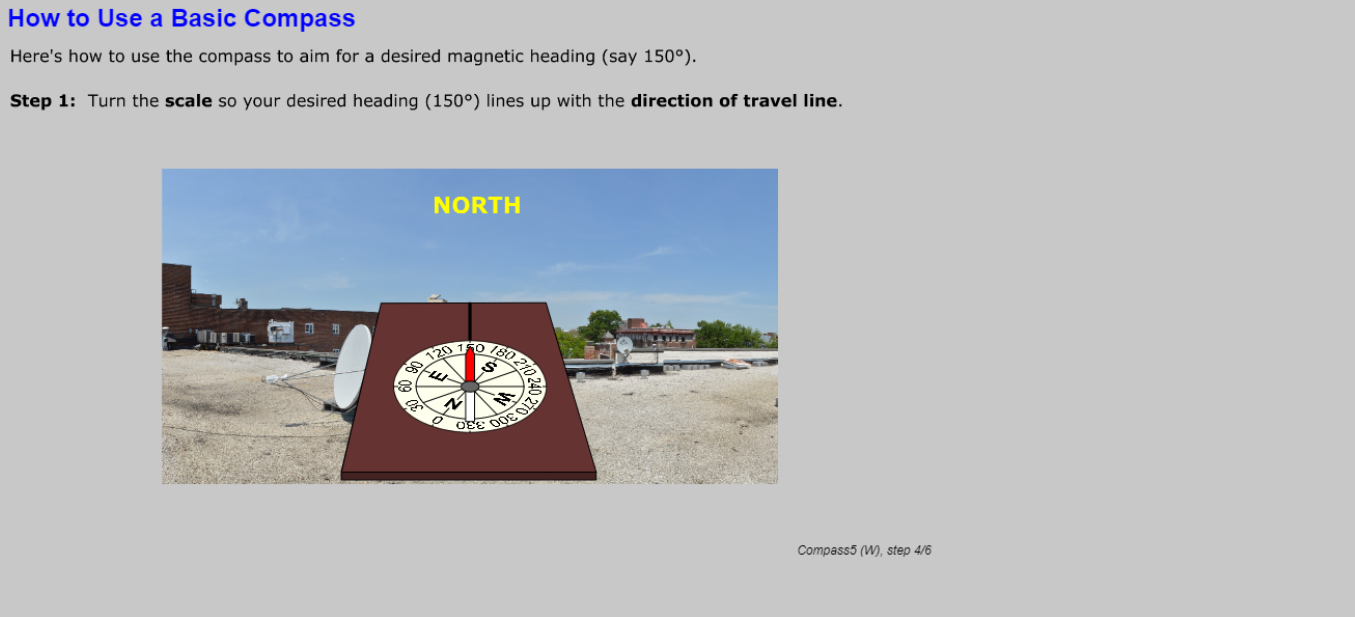
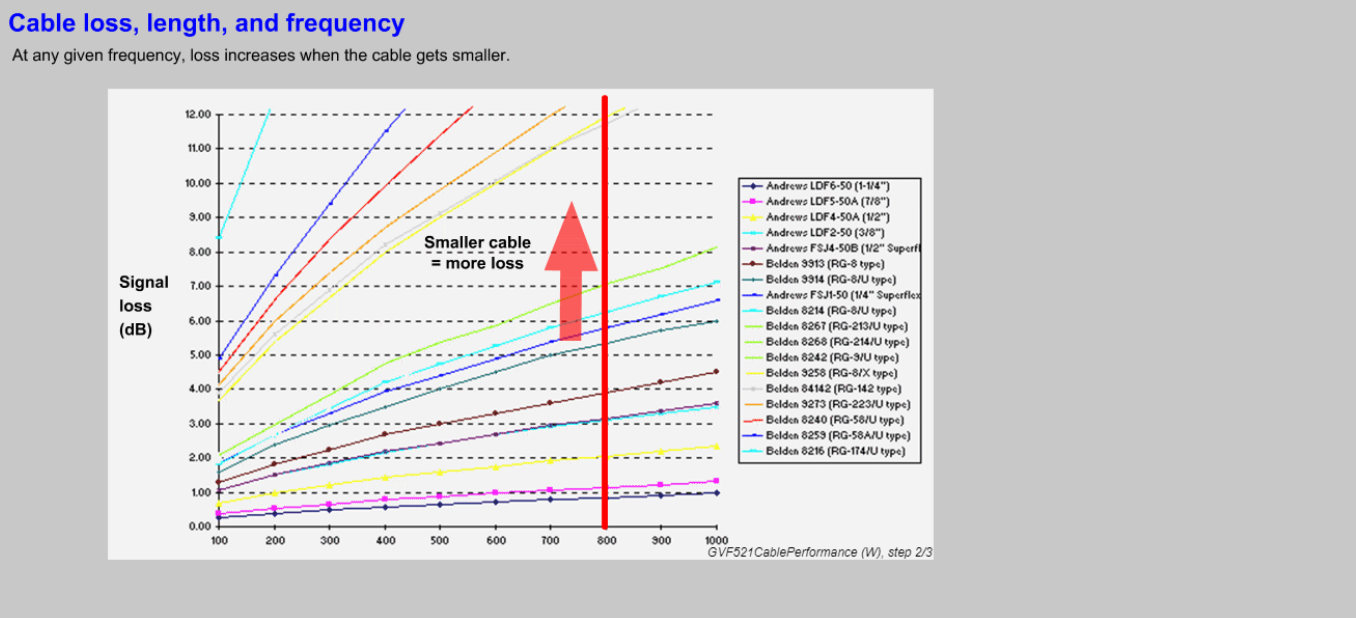
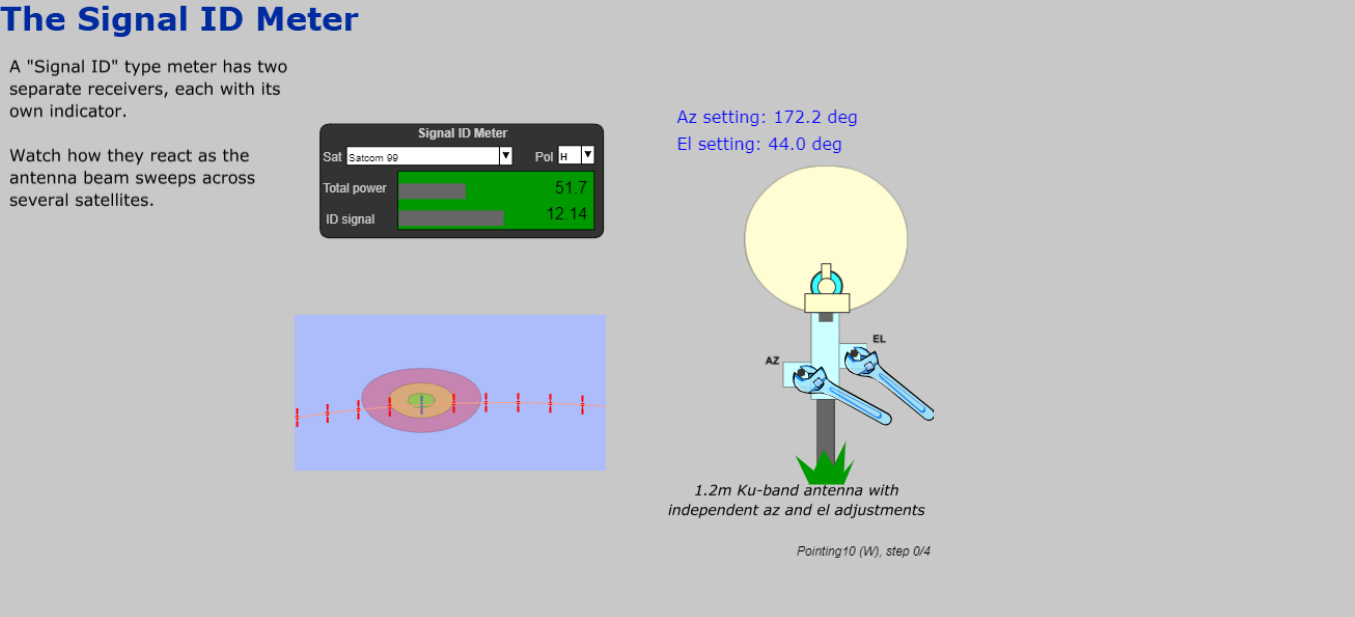
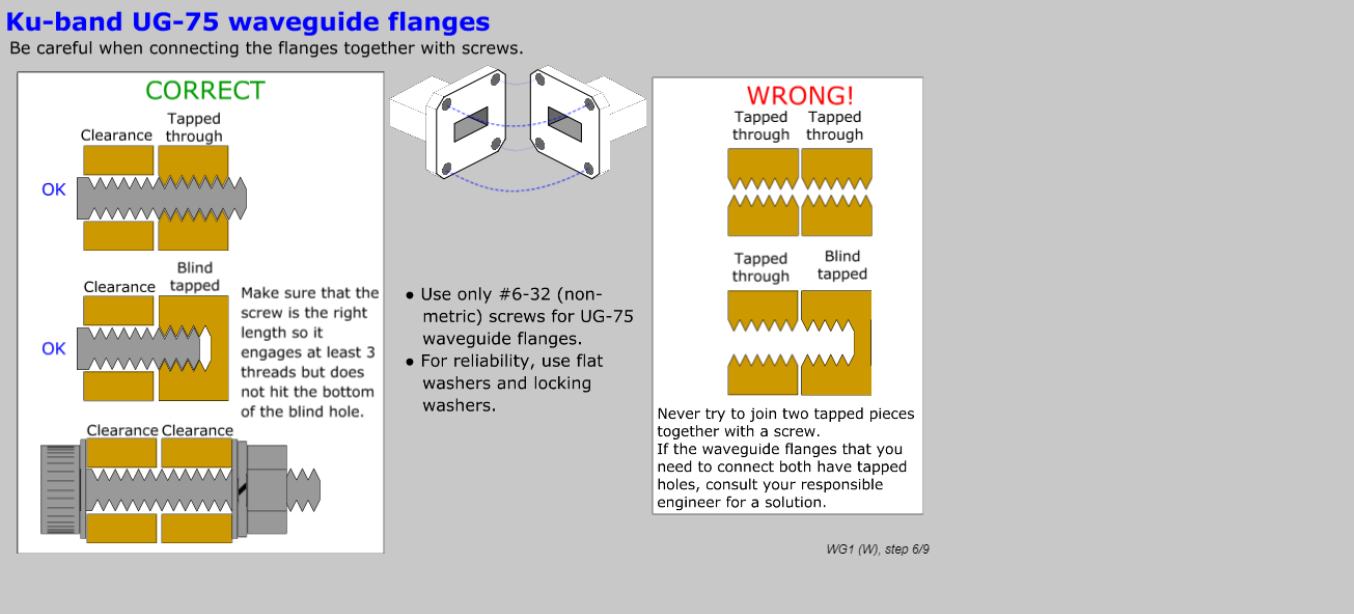
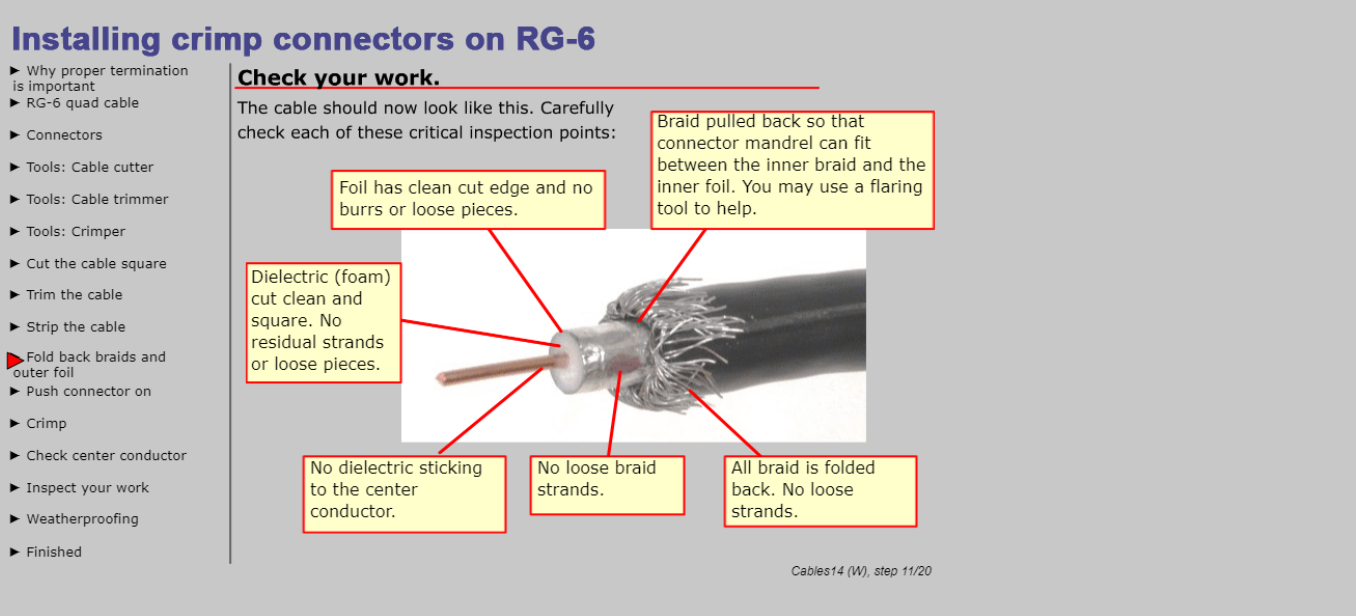
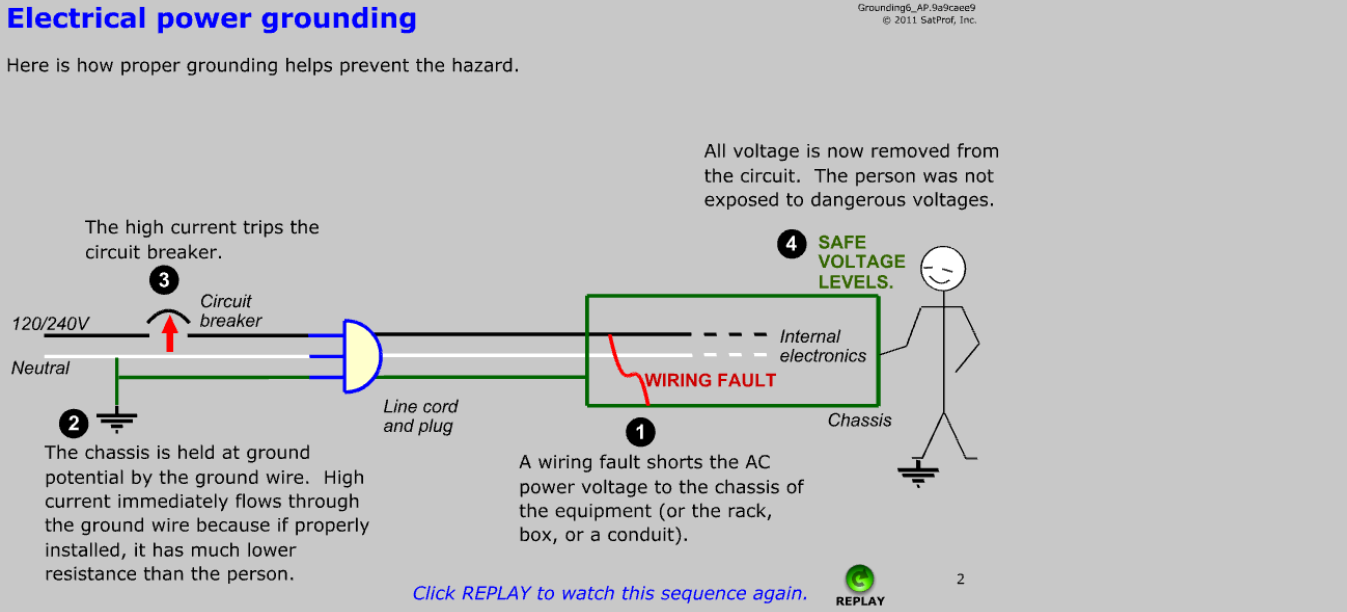
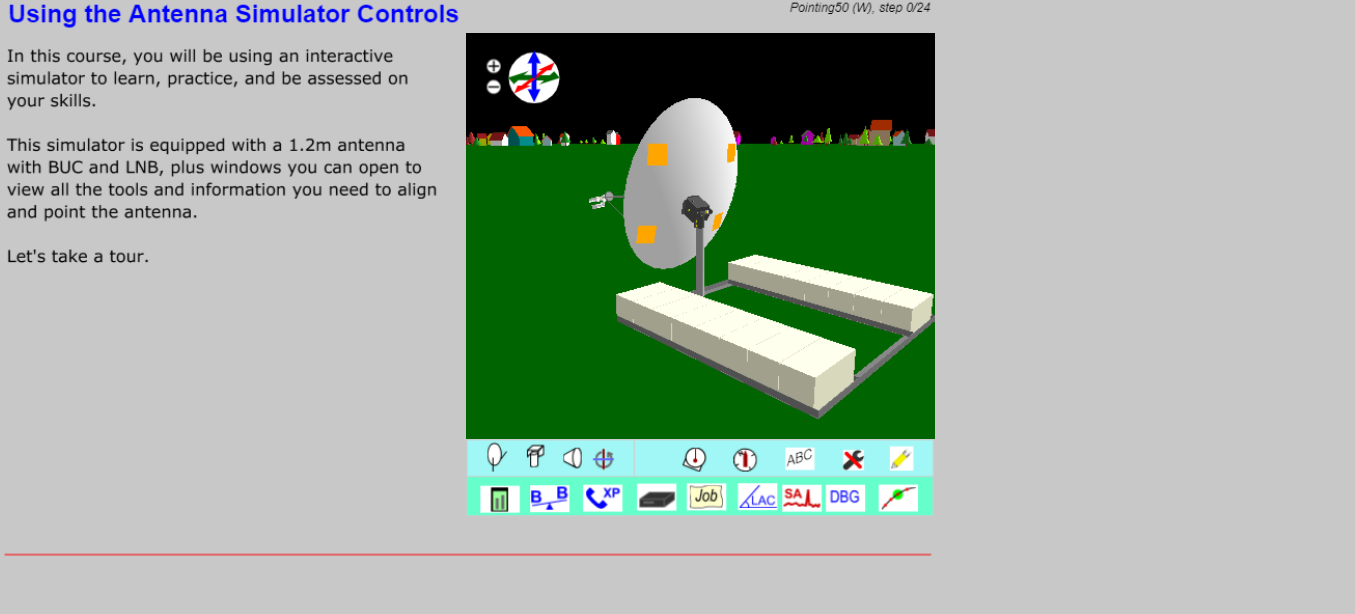
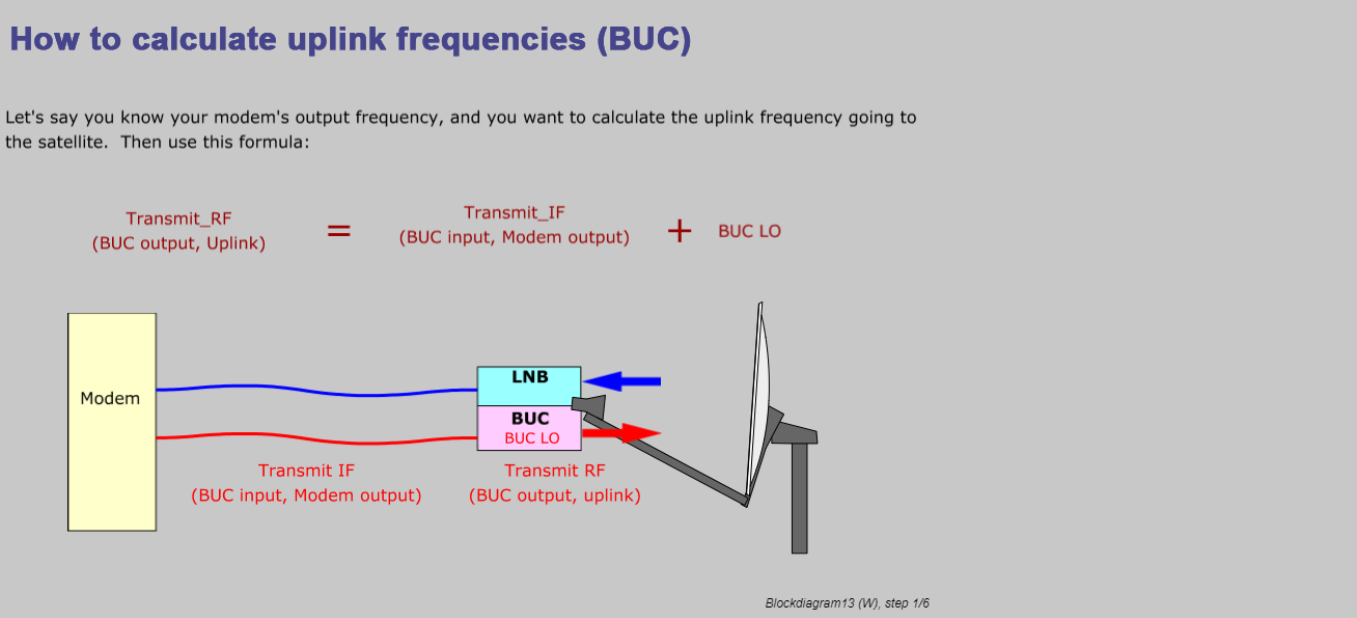
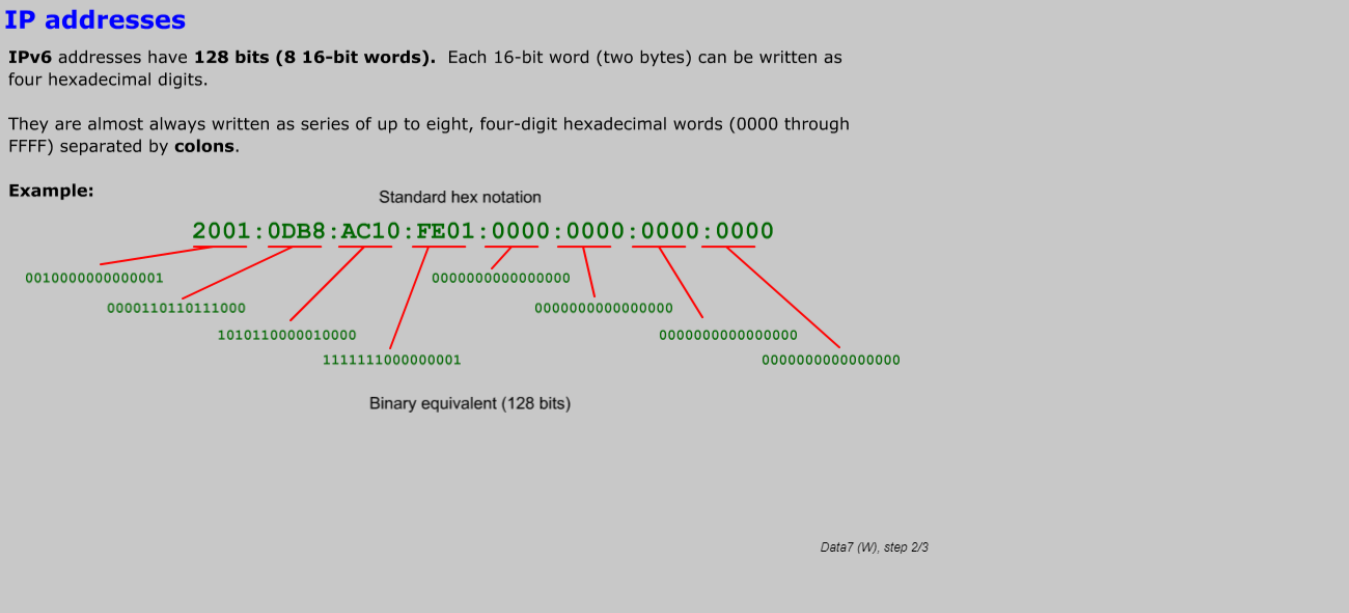
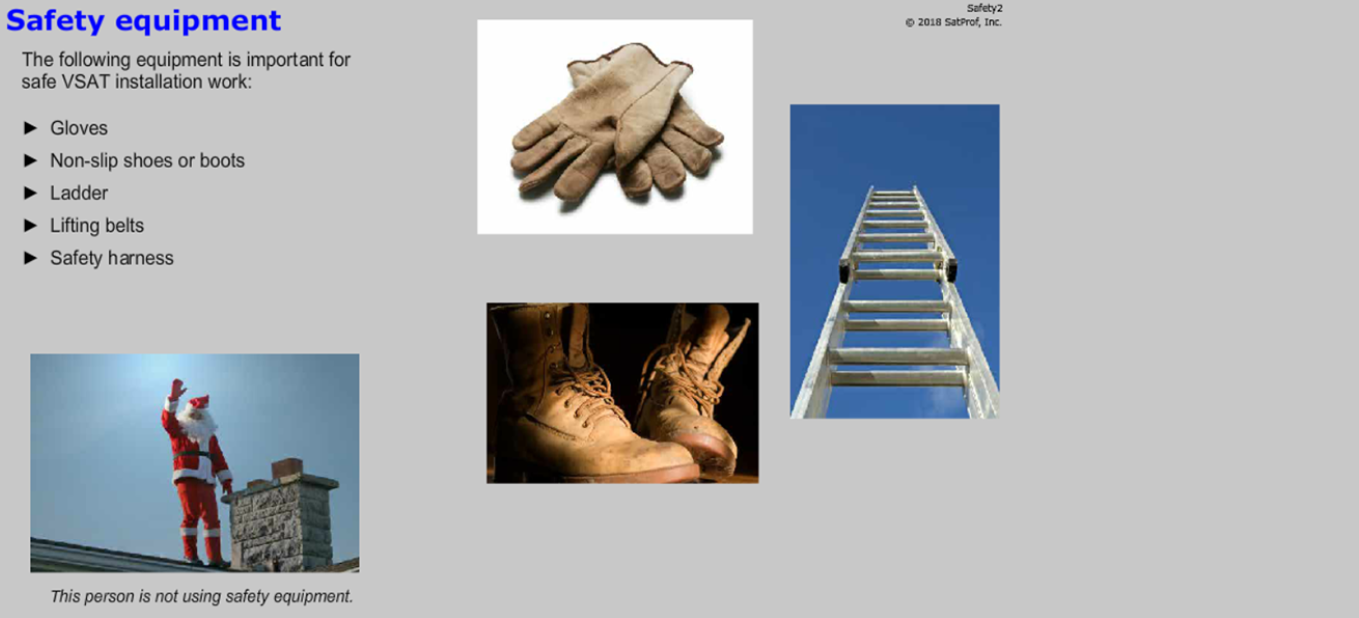
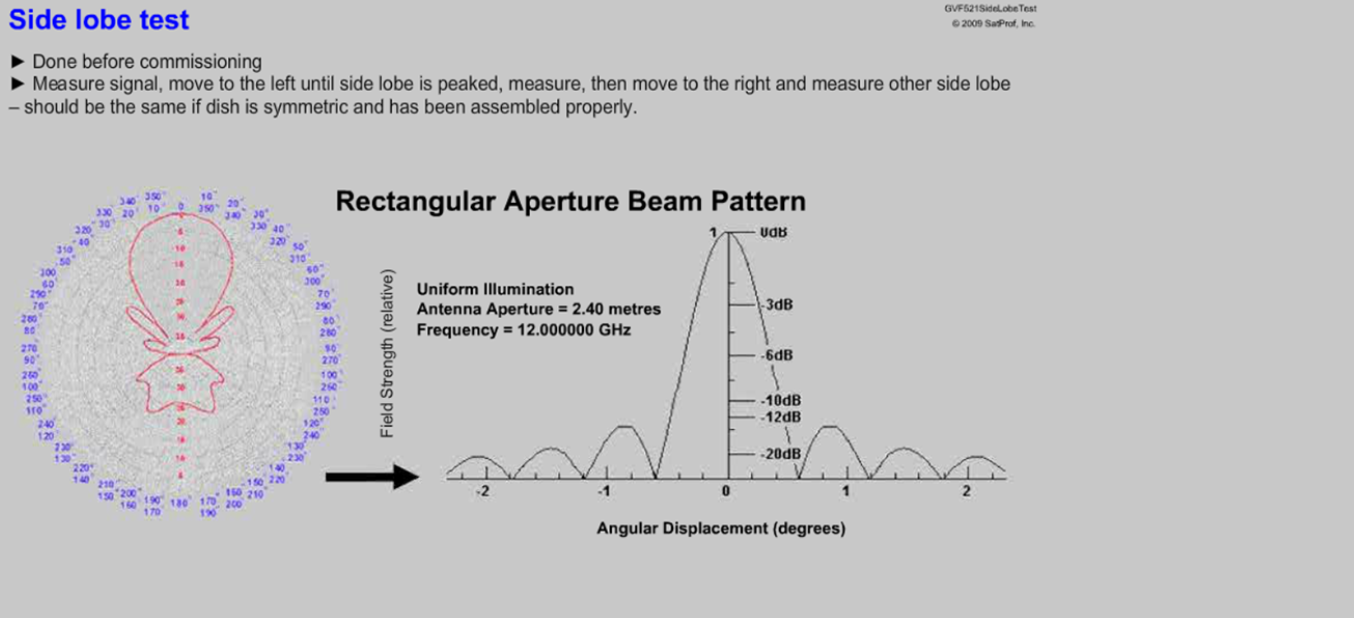
Learning Objectives
- Understand typical installation instructions and specifications.
- Describe practical configurations for VSAT indoor and outdoor hardware.
- Proper site selection and cable routing choices.
- Describe cable resistance & calculate DC voltage drops.
- Define splitter RF losses and calculate IF level changes through cables and splitters.
- Describe the proper mounting of VSAT antennas.
- Identify proper connector and cable entry waterproofing techniques.
- List the proper techniques and etiquette for activating a VSAT on a satellite.
- List the required tools for VSAT installation and describe their proper use.
- List the test equipment used for VSAT installation (VOM, signal meter, spectrum analyzer) and describe their proper use.
- Describe how a field technician should properly communicate with a customer.
- Troubleshoot basic IP networking problems using ping and tracert.
- Demonstrate correct technique for accurately pointing a VSAT antenna.
- Demonstrate correct technique for accurately aligning polarization in a VSAT antenna.
- Describe the proper installation of indoor equipment.
- Describe proper grounding technique for VSATs.
- List the key safety issues for VSAT field technicians.
- Describe troubleshooting methods for VSAT links.
- List the main preventive maintenance tasks for a VSAT.